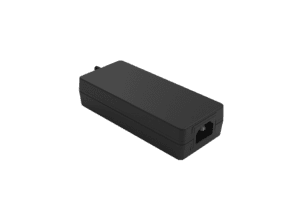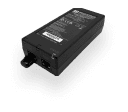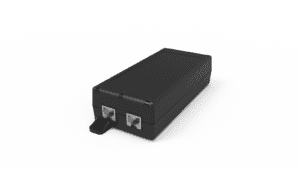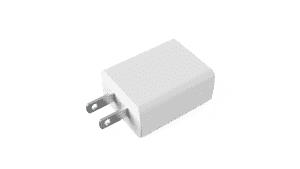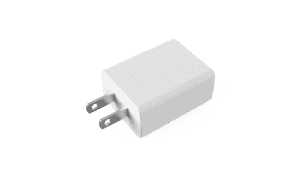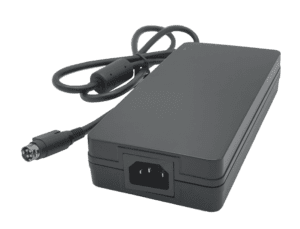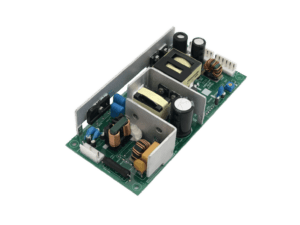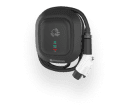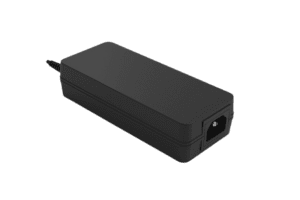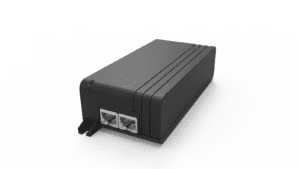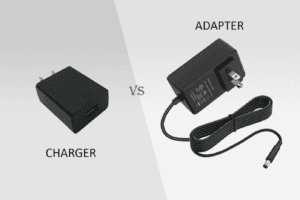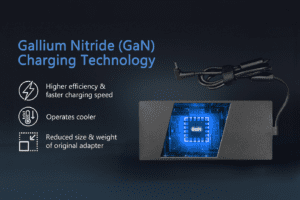BLOG
Autonomous Vacuum Robot Power Supply: How to Achieve Rapid Recharge for Commercial Cleaning Fleets
Table of contents

Why Rapid Recharging Is Critical for Commercial Vacuum Robot Fleets
Autonomous vacuum robots are revolutionizing large-scale commercial cleaning in malls, airports, office buildings, and hospitals. These machines replace or augment human janitorial crews by automating floor cleaning on tight schedules—often during off-hours. But in high-traffic environments, fleet downtime for charging can cripple cleaning coverage and reduce operational ROI.
To maintain 24/7 readiness, commercial fleets need high-efficiency, fast-recharging power systems that minimize the time robots spend docked. Unlike consumer robotic vacuums, commercial models have:
- Larger battery packs (1–2 kWh or more)
- Heavier workloads (hours of non-stop sweeping)
- Precision route plans with limited idle windows
Rapid recharge ensures robots can top off during short breaks or clean multiple zones per shift without full depletions. This not only improves cleaning throughput but extends battery lifespan by avoiding deep discharge cycles.
Top Features
- Charging power of 1–2 kW with fast current ramp-up
- Wide voltage support (24 V–60 V) for different robot platforms
- Smart pre-charge and CC/CV logic
Top Benefits
- Maximizes cleaning coverage per shift
- Reduces robot fleet size needed to cover square footage
- Lowers total charging time by 40–60% compared to trickle charge
Best Practices
- Design docks around cleaning routes to reduce travel time
- Prioritize top-off charging during non-peak cleaning intervals
- Monitor fleet energy analytics to plan recharge cycles efficiently
Fast charging isn’t just a feature—it’s a necessity in scaled commercial automation.
Engineering Safe High-Speed Charging for Floor-Cleaning Robots
While speed is key, safety is paramount. High-current charging introduces risks like overheating, battery damage, or fire hazards if not properly managed. Commercial cleaning robots typically use lithium-ion batteries, which must be charged using intelligent current control with safeguards at every step.
Power supplies should be designed with:
- Active PFC for grid-friendly high-wattage conversion
- CC/CV charging with programmable output (e.g., 42 V @ 25 A)
- CAN or UART communication with the robot’s BMS to regulate current and voltage dynamically
To prevent electrical faults, chargers must include:
- Over-voltage, over-current, short-circuit, and thermal protection
- Inrush current limiters to manage first contact
- Contact sequencing to avoid power-on before docking is complete
Smart firmware allows the charger to adapt based on battery state, environment, and usage history. Safety interlocks and charge authorization logic ensure that only compatible, healthy batteries are charged.
Top Features
- High-efficiency AC-DC modules (≥94%) with power delivery up to 2 kW
- Pre-charge logic with contact verification and ramp control
- Isolation transformers for user and system protection
Top Benefits
- Delivers safe fast-charging without battery degradation
- Protects against charge-related faults or field failures
- Meets UL/IEC safety standards for commercial deployment
Best Practices
- Use double-insulated power paths and redundant temperature sensors
- Pre-certify chargers for UL 62368-1 and IEC 61000 EMC compliance
- Run battery simulation during charger development for real-world validation
In commercial settings, speed without safety is a liability. Rapid charge must be safe charge.
Docking Systems for Accurate, Repeatable Alignment
Floor-cleaning robots must dock dozens of times per week—often in tight spaces, near walls, or under shelves. A high-speed charger is only effective if the docking system enables reliable, repeatable connections without mechanical stress or manual assistance.
Key mechanical design elements include:
- Tapered or funnel-shaped guide rails
- Spring-loaded pogo pins or copper pad contact points
- Magnetic assist to auto-correct minor misalignments
The dock must accommodate small angular or lateral errors, using compliant contact surfaces and low-friction entry paths. This reduces wear, prevents docking failure, and allows for true “drive-by” charging.
Smart docks also include:
- Sensors to detect full docking alignment
- LED indicators for charge status
- Automatic power handoff only after contact validation
Top Features
- Self-centering mechanical design with vibration dampening
- Contact redundancy to maintain current flow even with minor contact wear
- Dockable from front, rear, or side (based on robot geometry)
Top Benefits
- Reduces failed charge attempts due to misalignment
- Minimizes wear on charging hardware over time
- Supports full fleet autonomy without human intervention
Best Practices
- Validate contact engagement through 10,000+ insertion cycles
- Test with worn wheels or dirty sensors to simulate real-world use
- Design charging pads with corrosion-resistant coatings (e.g., gold or nickel)
A good dock should feel invisible to the robot: fast, secure, and always ready.
CLIENT'S QUOTE
"Phihong’s PoE solutions have made a huge difference for us! Our network runs more efficiently, and we’ve seen real cost savings. We couldn’t be happier!"
Power Supply Design and Charging Profiles for Li-ion Battery Health
While fast charging is important, preserving lithium-ion battery health is critical for long-term fleet ROI. Commercial robot batteries are expensive, and early degradation due to improper charging can lead to costly replacements and reduced runtime.
Power supplies must follow precise charge curves:
- Constant Current (CC) for initial charging phase
- Constant Voltage (CV) as the battery nears full
- Controlled tapering with termination current thresholds
Integration with the robot’s BMS allows the charger to adapt dynamically to:
- Battery temperature
- Cycle history
- Charge acceptance rate
Smart chargers also store charging history and can adjust charge profiles based on environmental or usage patterns. For example, in colder warehouses, charge current may be automatically reduced to prevent lithium plating.
Top Features
- Programmable voltage and current profiles per robot model
- Communication interface for BMS feedback (CAN/UART)
- Temperature-adjusted current delivery
Top Benefits
- Extends battery life by 20–30% compared to static charging
- Reduces risk of thermal runaway or overcharging
- Enables consistent runtime across the battery’s lifecycle
Best Practices
- Validate charge termination timing under all temperature bands
- Include per-cycle logs for fleet-level battery analytics
- Build in safe fallback profiles if communication is lost
Smart charging protects your power investment—and your robot’s uptime.
Telemetry and Fleet Integration for Energy Monitoring
Fleet managers overseeing dozens—or hundreds—of cleaning robots need real-time visibility into charge behavior, status, and anomalies. Smart power supplies and docking stations can feed data into fleet dashboards to support:
- Predictive maintenance
- Load balancing
- Energy optimization
Key telemetry includes:
- SoC (State of Charge) at start and end of session
- Charge duration and total energy delivered
- Contact quality or failed docking events
- Temperature spikes or battery health warnings
APIs or MQTT streams allow this data to sync with fleet management software, cloud dashboards, or facility energy systems.
Top Features
- Onboard microcontroller with data logging and connectivity (Wi-Fi, Ethernet)
- Support for standard protocols: Modbus, MQTT, JSON API
- Remote firmware updates and usage analytics
Top Benefits
- Helps operators plan mission schedules around charge status
- Flags failing batteries or docks before they cause downtime
- Enables smarter rotation of charging resources across shifts
Best Practices
- Build charge data into usage-based maintenance models
- Integrate with building energy systems for grid demand planning
- Use mobile alerts to notify cleaning staff of charge errors
When your charger can talk to your fleet manager, charging becomes a strategic tool—not a blind spot.
How Phihong USA Supports Autonomous Cleaning Robot Fleets
Phihong USA is a global leader in power solutions for robotics, automation, and commercial equipment. Our charging platforms are designed specifically for autonomous robot fleets that operate in mission-critical, commercial environments.
We provide:
- High-efficiency AC-DC power modules from 500 W to 2 kW
- Programmable output with BMS integration via CAN or UART
- Rugged pogo-pin and copper pad docking hardware
- Telemetry-ready firmware with cloud or local integration
- Thermal-optimized housings for tight enclosures
- Pre-certified UL, CE, FCC modules for global deployment
Whether you’re scaling cleaning fleets in airports, retail chains, or office parks, Phihong provides fast-charging, intelligent, and reliable power systems that keep your robots running—and your facilities spotless.
To start your project or request custom engineering, visit www.phihong.com or email usasales@phihongusa.com .

Contact Our Team Today!
Our dedicated sales team and international partners are prepared to support you with your latest projects and initiatives globally.
Explore More with Phihong USA
As we conclude our exploration of PoE technology, it’s evident how these innovations are streamlining power and data integration across various industries. Phihong USA stands at the forefront of this technological advancement, offering a diverse range of power solutions designed to meet the evolving needs of modern industries.
Phihong USA’s extensive product lineup includes:
- Power over Ethernet (PoE) Solutions: Delivering reliable power and data transmission over a single cable, ideal for simplifying network installations and reducing costs.
- AC/DC Adapters and Power Supplies: From compact adapters to industrial-grade power supplies, Phihong provides solutions that ensure efficiency and reliability in various applications.
- Battery Chargers: Customizable chargers for lithium-ion and lead-acid batteries, supporting a wide range of power requirements for mobility and industrial applications.
- Medical Power Supplies: Specialized power solutions designed to meet the stringent requirements of the healthcare industry, ensuring safety and reliability.
Phihong USA is committed to innovation and excellence, continually developing products that meet the highest standards of performance and reliability. Their global reach and dedication to customer support make them a trusted partner in powering the future.
Here are some useful links to explore Phihong USA’s offerings further and bring in new potential clients:
Visit Phihong USA to discover how their advanced power solutions can support your business needs. Whether you’re looking to upgrade your network, or find reliable power supplies, Phihong USA has you covered.
By choosing Phihong USA, you’re partnering with a leader in power technology, ensuring your operations run smoothly and efficiently with top-tier power solutions. Contact Us today!
FAQ
What charging power is ideal for commercial cleaning robots?
The optimal charging power depends on the robot’s battery capacity and operational schedule. Most commercial floor-cleaning robots use 24 V to 48 V lithium-ion packs, with capacities ranging from 1 to 3 kWh. To recharge within 60–90 minutes—allowing for multiple shifts per day—a charger rated at 500 W to 2 kW is typically ideal.
Faster charging reduces the need for excess fleet inventory, as fewer robots can cover more ground with smart scheduling. Phihong’s programmable chargers allow precise tuning to your robot’s charge profile, delivering speed and battery safety in balance. High-current delivery with BMS coordination ensures charge cycles are fast but do not stress the battery, helping reduce long-term degradation.
How can I protect robot batteries during fast charging?
Battery health depends on smart charge control. Even at high power levels, the charging process should follow a CC/CV (Constant Current/Constant Voltage) curve, tapering off as the battery nears full. Temperature sensors and communication with the BMS ensure that the charger:
- Reduces current in cold environments
- Terminates properly at the correct SoC
- Logs cycles for wear prediction
Phihong chargers include these features by default, delivering fast charging without sacrificing battery longevity.
What docking mechanisms work best for vacuum robots?
Docking systems should prioritize alignment tolerance, durability, and speed. Most commercial robot docks use:
- Spring-loaded pogo pins or copper pads
- Tapered rails or guides for alignment
- Magnetic assist or fiducial markers for camera-based systems
The goal is to allow a robot to consistently connect on the first attempt, even if slightly misaligned. Phihong offers modular dock components built for thousands of charge cycles in cleaning environments.
Can I track charging data remotely?
Yes. Phihong’s smart charging platforms offer telemetry and remote monitoring. This includes:
- Charge session tracking
- Battery SoC logging
- Error detection (e.g., failed dock attempts, high temps)
Data can be streamed via Ethernet, Wi-Fi, or cloud protocols (like MQTT or REST APIs) into fleet management dashboards or building operations software. This gives operators insight into robot uptime and battery condition, enabling smarter maintenance and fewer surprises.
How does Phihong support fleet scaling?
Phihong supports OEMs and operators from pilot to full-scale deployment. Our offerings include:
- Modular chargers that scale per site or per robot
- Fleet-level diagnostics firmware
- Pre-certified global power systems
- Integration support with BMS and robot software
We help customers create future-proof charging ecosystems that support both speed and safety—tailored to their cleaning workflow and scale.

